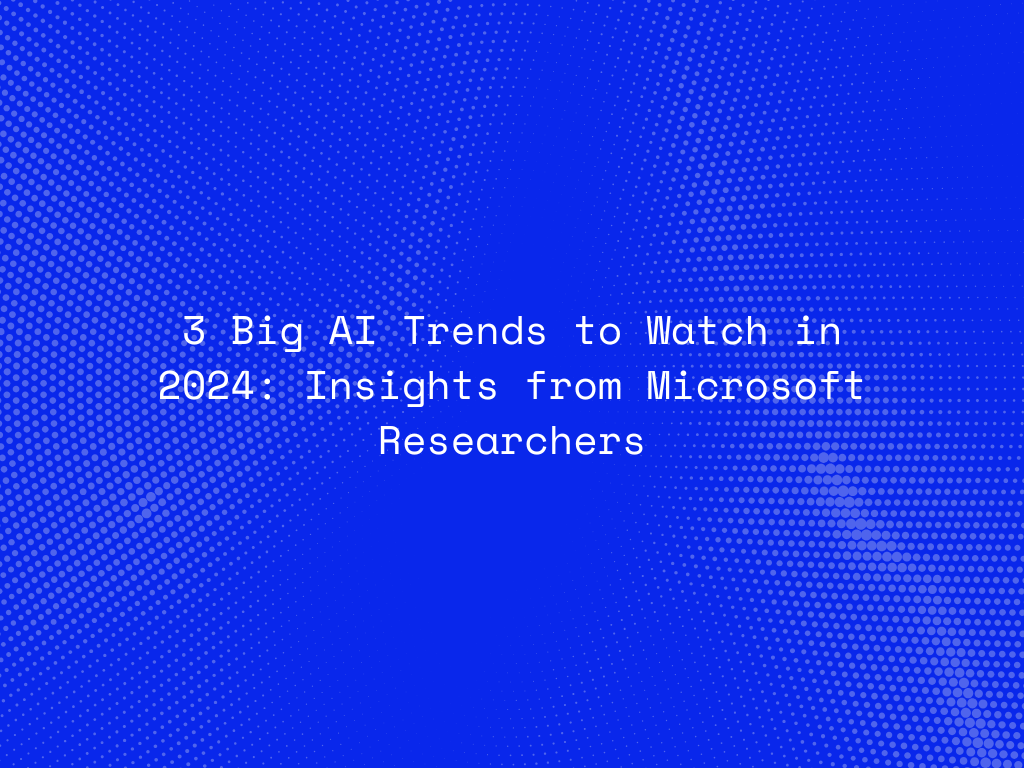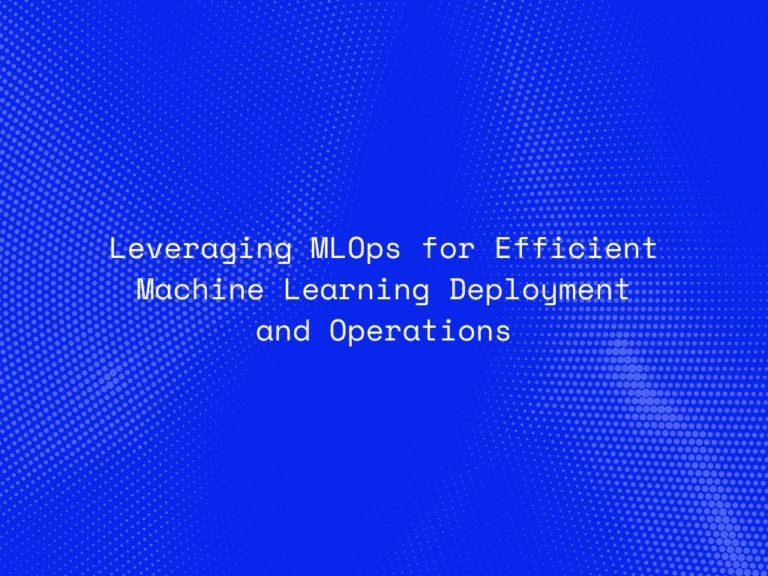As we enter 2024, the world of artificial intelligence (AI) is evolving rapidly, with significant advancements poised to reshape industries and drive innovation. From the development of more efficient models to the growing focus on ethical AI and regulatory frameworks, the landscape is shifting in profound ways. Microsoft researchers, at the forefront of many AI breakthroughs, have highlighted key trends that will define the next phase of AI development.
In this blog, we’ll explore three major AI trends to watch in 2024, offering insights into the technologies and innovations that will shape the future of AI.
1. Rise of Smaller, More Efficient AI Models
In 2024, a major shift in AI research is expected as focus moves away from massive models like GPT-4 toward smaller, more efficient AI architectures. These models are designed to deliver high performance while being computationally lighter, cheaper to deploy, and better suited for real-time applications on edge devices.
Key Insights from Microsoft Researchers:
-
Smaller Models with Comparable Performance: Smaller AI models can now perform on par with large-scale models in many tasks. Techniques like model pruning, quantization, and distillation allow for more efficient AI systems, capable of running on devices with limited computational power, such as smartphones or IoT devices.
- Example: Instead of requiring massive infrastructure, developers can deploy lightweight language models that deliver conversational AI capabilities on mobile devices with minimal latency.
-
Open Source and Customization: With advancements in open-source AI tools, researchers and developers can now fine-tune smaller models to fit niche applications. This democratizes access to AI, enabling smaller businesses to leverage the power of machine learning without the need for extensive computational resources.
- Impact: This shift will enable more personalized AI solutions across industries like healthcare, retail, and education, where real-time insights from edge devices are crucial for customer experiences.
Why This Matters in 2024:
As AI becomes ubiquitous, the demand for smaller, more adaptable models will grow. The ability to deploy AI on low-power devices will unlock new use cases and make AI-driven solutions accessible to organizations of all sizes, especially those that previously could not afford large-scale infrastructure.
Connect With Us
2. Ethical AI and Regulatory Frameworks Take Center Stage
With AI systems playing an increasing role in society, the conversation around ethics and regulation has become more urgent. In 2024, expect to see a continued emphasis on AI governance as governments and industry leaders strive to create responsible frameworks for the development and deployment of AI.
Insights from Microsoft Researchers:
-
AI Accountability and Transparency: AI models, particularly in high-stakes sectors like healthcare, finance, and law enforcement, must become more transparent and explainable. Microsoft researchers highlight the need for systems that can provide clear explanations for their decision-making processes, particularly in cases where AI recommendations directly affect human lives.
- Example: In the healthcare sector, AI models that assist with diagnosis or treatment recommendations must provide clinicians with a clear rationale for their predictions, ensuring transparency and aiding in decision-making.
-
Regulatory Compliance: With growing concerns about AI bias, discrimination, and data privacy, many governments are establishing regulations that require companies to ensure their AI models are compliant with ethical standards. In the EU, the AI Act is setting the stage for how AI technologies should be designed, deployed, and monitored, while other regions like the US are working on similar frameworks.
- Impact: Companies will need to invest in ethical AI practices, incorporating bias detection, fairness assessments, and data privacy protections into their AI development workflows.
-
Responsible AI Initiatives: Microsoft, like other tech giants, is prioritizing Responsible AI frameworks, which guide the development of AI systems that are fair, secure, and inclusive. These initiatives focus on creating AI that respects human rights, minimizes harm, and is accountable for its actions.
Why This Matters in 2024:
As the adoption of AI grows, so does the risk of unintended consequences, such as biased algorithms or misuse of personal data. Ensuring that AI systems are developed and deployed in a transparent, accountable, and ethical manner will be critical to gaining public trust and ensuring compliance with evolving regulatory frameworks.
Connect With Us
3. Multimodal AI: The Next Frontier in Generative Models
Generative AI has already made waves in 2023, with text-to-image and text-to-video models like DALL-E and Stable Diffusion showcasing the power of machine learning. In 2024, the field will evolve even further with the rise of multimodal AI—models that can seamlessly process and generate multiple forms of data (text, images, audio, video) in tandem.
Insights from Microsoft Researchers:
-
Multimodal Capabilities for Enhanced Interaction: Researchers are developing models that can understand and generate multiple types of data simultaneously. These multimodal models will not only respond to textual inputs but also process visual cues, audio, and even sensor data to deliver more interactive, dynamic responses.
- Example: A multimodal AI system could assist in virtual meetings by not only transcribing the conversation but also analyzing participants’ facial expressions and body language to gauge engagement or emotional tone.
-
Generative AI Beyond Text and Images: Microsoft researchers emphasize that in 2024, generative AI will expand into more complex, multimedia content creation. Models capable of producing fully synthesized video content from textual prompts, combining audio, motion, and visuals will revolutionize industries like entertainment, marketing, and gaming.
- Impact: Brands could use multimodal AI to create highly engaging, interactive marketing campaigns that combine video, voiceovers, and text to deliver immersive customer experiences.
-
Application in Robotics and Autonomous Systems: Beyond content generation, multimodal AI will power autonomous systems like robots and self-driving vehicles. These systems will rely on multimodal inputs—combining sensor data, visual data, and real-time environmental analysis—to navigate complex tasks more efficiently.
Why This Matters in 2024:
The move towards multimodal AI marks a significant leap in human-computer interaction, making AI systems more intuitive and capable of engaging with the world in ways that mirror human perception. This shift will open up new possibilities for AI in sectors ranging from entertainment to healthcare and autonomous vehicles, enabling more natural, context-aware systems.
Conclusion
As AI continues to evolve in 2024, three key trends stand out: the rise of smaller, more efficient AI models, the growing focus on ethical AI and regulatory frameworks, and the expansion of multimodal AI capabilities. These advancements, driven by cutting-edge research from companies like Microsoft, will not only reshape industries but also bring new challenges and opportunities for AI developers, businesses, and policymakers.
With these trends on the horizon, 2024 promises to be a pivotal year for AI, marked by innovations that make AI more accessible, accountable, and integrated into our daily lives. Whether it’s through more efficient models, responsible AI practices, or multimodal systems, the future of AI looks brighter and more dynamic than ever.




